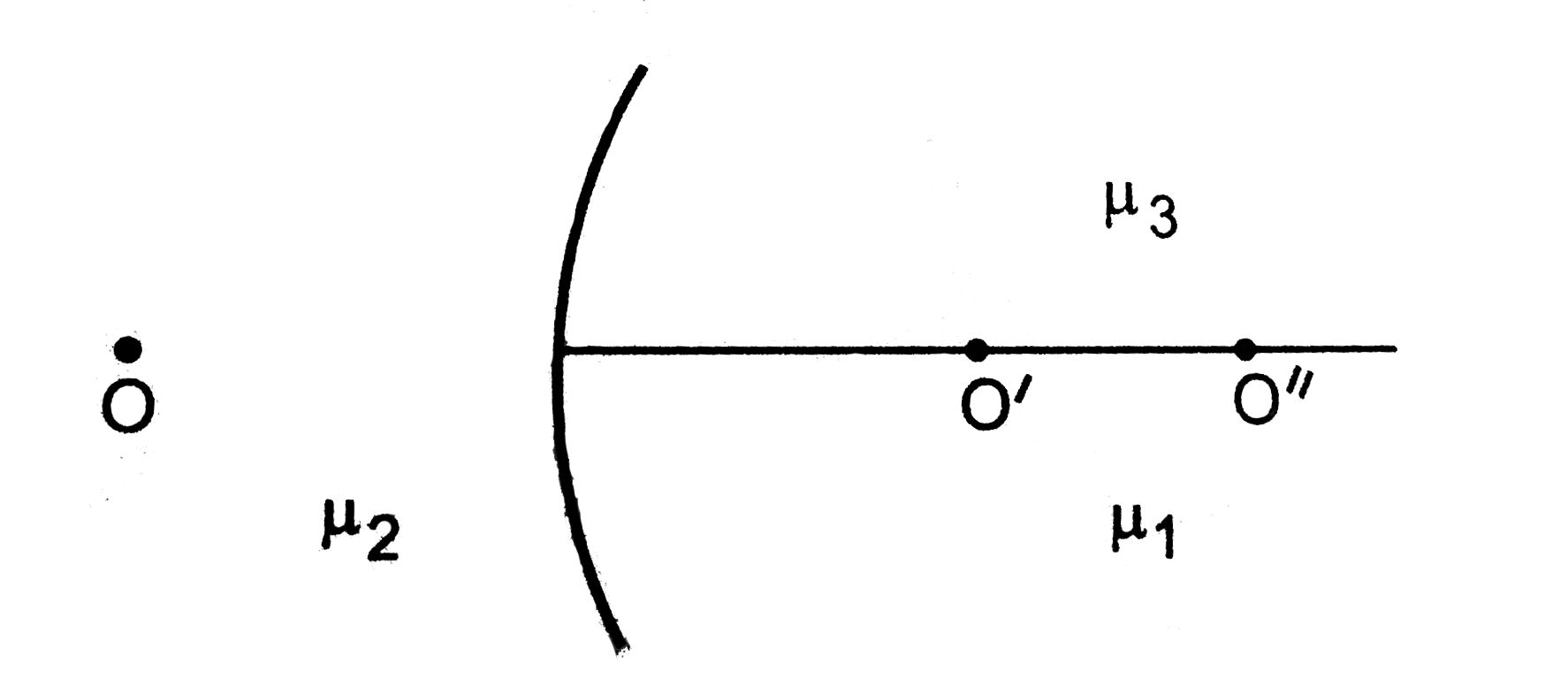Starting new cartesian sign conventions, derive the relation. −μ1u+μ2v=μ2−μ1R, when refraction occurs from rarer to denser medium at convex spherical refracting surface (μ1<μ2). Where u, v and R are object distance, image distance and radius of curvature of spherical surface respectively.Solution in Punjabi
Step by step video & image solution for Starting new cartesian sign conventions, derive the relation. -frac(mu_1)(u)+frac(mu_2)(v)=frac(mu_2-mu_1)(R), when refraction occurs from rarer to denser medium at convex spherical refracting surface (mu_1 lt mu_2). Where u, v and R are object distance, image distance and radius of curvature of spherical surface respectively. by Physics experts to help you in doubts & scoring excellent marks in Class 12 exams.
Topper's Solved these Questions
- BOOK - MODERN PUBLICATIONCHAPTER - REFRACTION OF LIGHTEXERCISE - EXERCISE168videos
REFRACTION OF LIGHT
- BOOK - MODERN PUBLICATIONCHAPTER - REFLECTION OF LIGHTEXERCISE - EXERCISE57videos
REFLECTION OF LIGHT
- BOOK - MODERN PUBLICATIONCHAPTER - SEMICONDUCTOR DEVICESEXERCISE - EXERCISE174videos
SEMICONDUCTOR DEVICES
Similar Questions
Explain the phenomenon of refraction at a plane surface separating two transparent media and show that μ=c/v where letters have their usual meanings.
02:05View SolutionState the characteristis of image formed by a plane mirror.
07:16View SolutionExplain the two processes involved in the formation of a p-n junciton diode. Hence defien the term"barrier potential".
08:48View SolutionThe equation of refraction at a spherical surface is μ2v−μ1u=μ2−μ1R
Taking R=∞, show that this equation leads to the equation
RealdepthApparentdepth=μ2μ1 for fraction at a plane surface.01:45View SolutionFigure shows figure three transparent medi of refractive indices μ1,μ2andμ3. A point object O is placed in the medium μ2. If the entire medium on the right of the spherical surface has refractive index μ1, the image forms at O. If this entire medium has refractive index μ2 the image form at O''. In the situation shown
 04:12View Solution
04:12View SolutionProve that −μ1u+μ2v=μ2−μ1R when refraction occurs from rarer to denser medium at a concave spherical refracting surface.
03:42View SolutionWhen refraction occurs from denser to……….., then (mu_2)/(mu_1) = …………. .
07:59View SolutionA double convex lens, made from a material of refractive index mu_1 , is immersed in a liquid of refractive index mu_2 , where mu_2 gt mu_1 . What change, if any, would occur in the nature of the lens?
12:34View SolutionA Plane convex lens of refractive index mu_1 and focal length f_1 is kept in contact with another plane concave lens of refractive index mu_2 and focal length f_2 If the radius of curvature of their spherical faces is R each and f_1 = 3 f_2 then mu_1 " and " mu_2 are related as:
10:18View SolutionFigure shows three transparent media of refractive indices μ1,μ2andμ3. A point object O is placed in the medium μ2. If the entire medium on the right of the spherical surface has refractive index μ1, the image forms at O'. If this entire medium has refractive index μ3 the image form at O''. In the situation shown
 06:18View Solution
06:18View SolutionBy stating the sign conventions and assumptions used, derive the relation between distance of object, distance of image and radius of curvature of convex spherical surfaces, when refraction takes from optically rarer to optically denser medium.
03:19View SolutionProve the following formula when refraction takes place at a convex spherical refracting surface and source of light lies in the rarer medium and image formed is real μ2v−μ1u=μ2−μ1R Where the terms have their usual meanings.
07:44View SolutionStarting new cartesian sign conventions, derive the relation. -frac(mu_1)(u) + frac(mu_2)(v) = frac(mu_2-mu_1)(R) , when refraction occurs from rarer to denser medium at convex spherical refracting surface (mu_1 lt mu_2) . Where u, v and R are object distance, image distance and radius of curvature of spherical surface respectively.
11:52View SolutionA convex lens made of a material of refractive index μ1 , is kept in a medium of refractive index μ2, Parallel rays of light are incident on the lens. Complete the pathof rays of light emerging from the convex lens if μ1=μ2.
07:08View SolutionDerive the relation:- frac(mu_2)(v) - frac(mu_1)(u) = frac(mu_2 - mu_1) (R) when light undergoes refraction fromoptically rarer to optically denser medium at curved surface.
View SolutionA spherical surface of radius of curvature R, seperates a rarer and a denser medium as shown in the figure.Derive the relation connecting object distance .u., image distance .v., radius of curvature R and the refractive indices n1 and n2 of the two media.
 02:13View Solution
02:13View Solution

